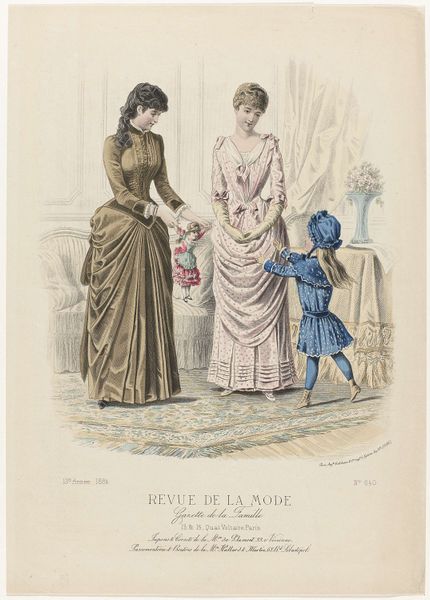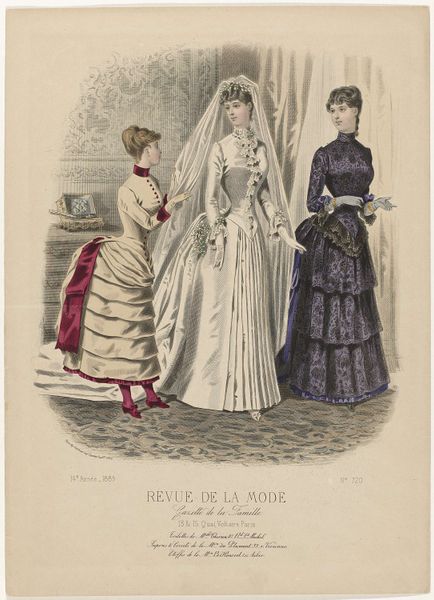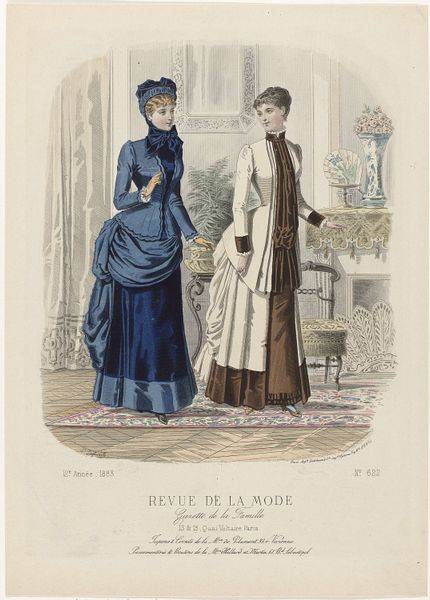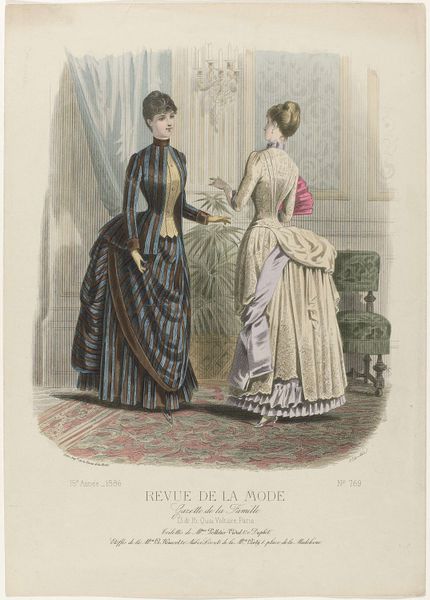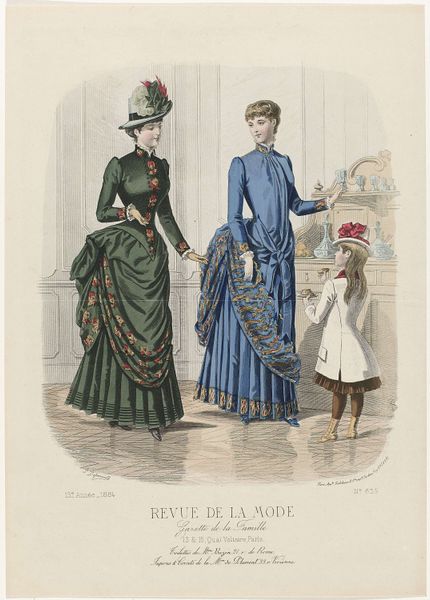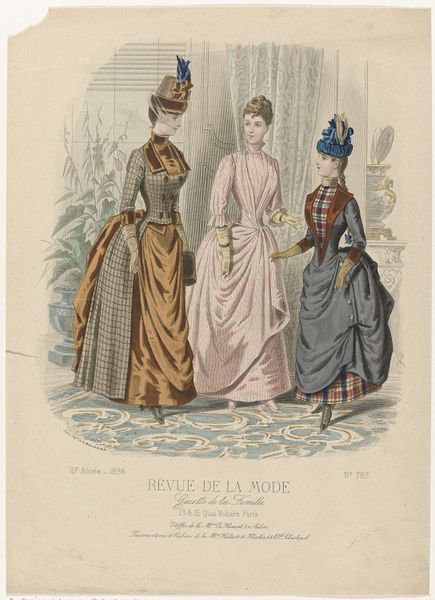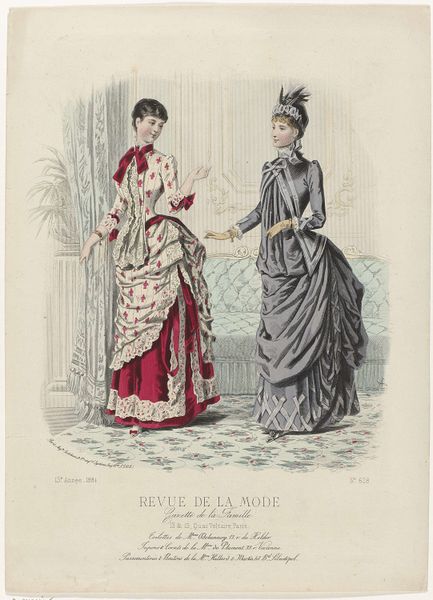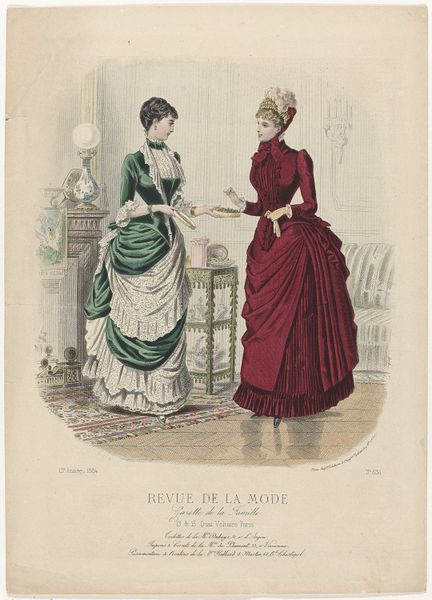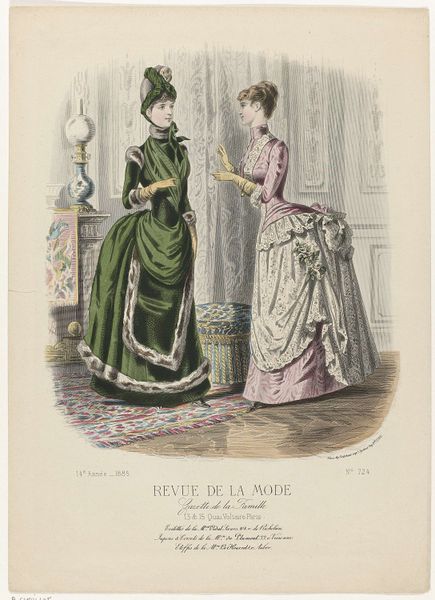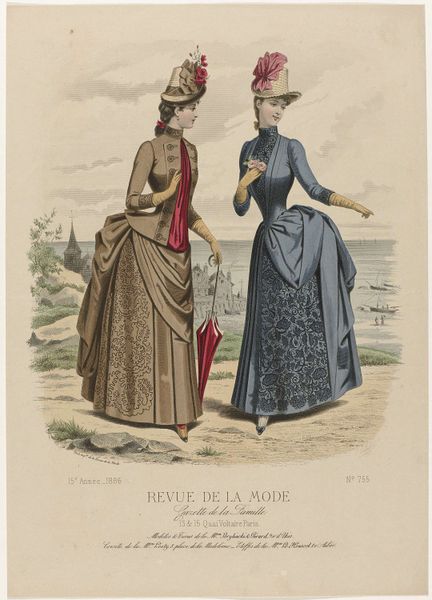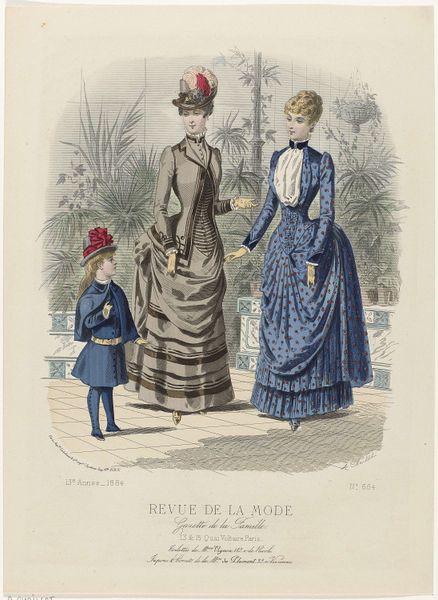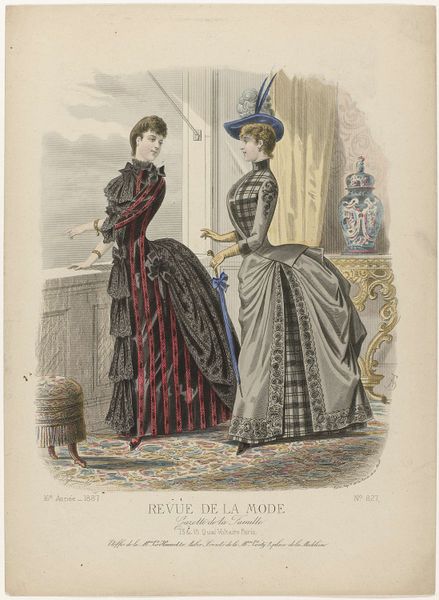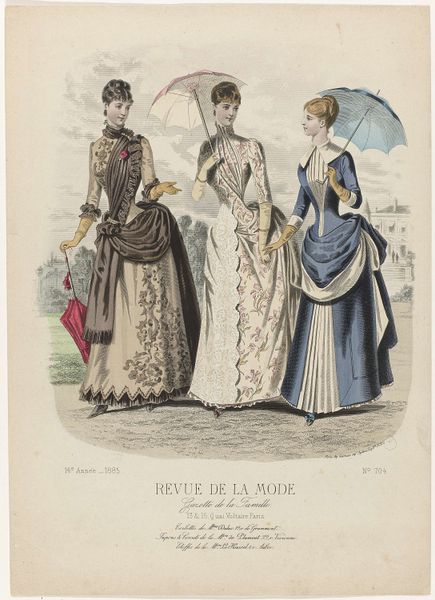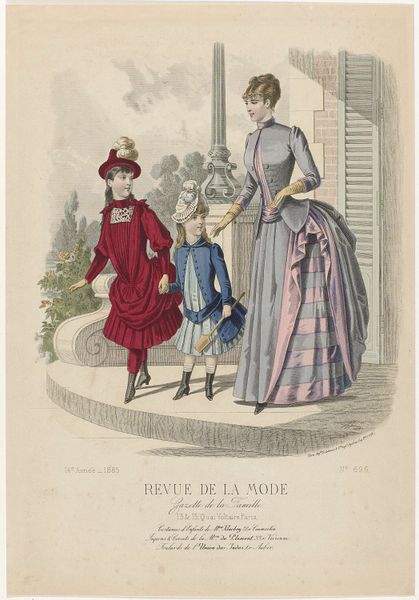
Revue de la Mode, Gazette de la Famille, dimanche 16 novembre 1884, 13e Année, No. 672: Jupons & Corsets (...) 1884
0:00
0:00
Dimensions: height 375 mm, width 268 mm
Copyright: Rijks Museum: Open Domain
Editor: So this piece is entitled, "Revue de la Mode, Gazette de la Famille, dimanche 16 novembre 1884, 13e Année, No. 672: Jupons & Corsets (...)," created in 1884, and appears to be a mixed-media print by E. Cheffer. I’m struck by the almost clinical presentation of these women in their corsets and dresses, it’s like they’re specimens. How do you interpret this work? Curator: What I see here are layers of societal expectations imposed on women. This wasn't simply about fashion; it was about control. Consider the restrictive undergarments on display - corsets that molded the body into an idealised shape, limiting movement and breath. These weren't just garments; they were instruments of power. Editor: Power? Over whom? Curator: Power dynamics are at play here on many levels. Who creates these images? Who consumes them? The male gaze is heavily implicated in the fashion industry, and that remains largely true even today. These images dictate a woman’s worth based on her adherence to certain standards of appearance, which becomes internalized and reinforces a cycle of control. What do you think? Editor: That's... disturbing, the layers of social control involved. So, it’s not just a pretty fashion plate, but a reflection of a whole power structure? Curator: Exactly. It’s essential to interrogate the historical context in which these images were produced and consumed. Consider how these fashion ideals impacted women’s lives, their opportunities, and their very sense of self. How did the increasing industrialization play a role, or what influence did popular literature exert on women? By delving into those aspects, we understand how such imagery promoted a narrative that had very concrete effects. Editor: Wow. I always thought fashion prints were kind of frivolous, but I’m realizing there's so much more to unpack. This makes me look at even contemporary fashion ads differently. Curator: Precisely! That’s the power of art history. By analyzing images like these, we expose the mechanisms through which social norms are constructed and reinforced. There's immense value in questioning and deconstructing dominant narratives.
Comments
No comments
Be the first to comment and join the conversation on the ultimate creative platform.
